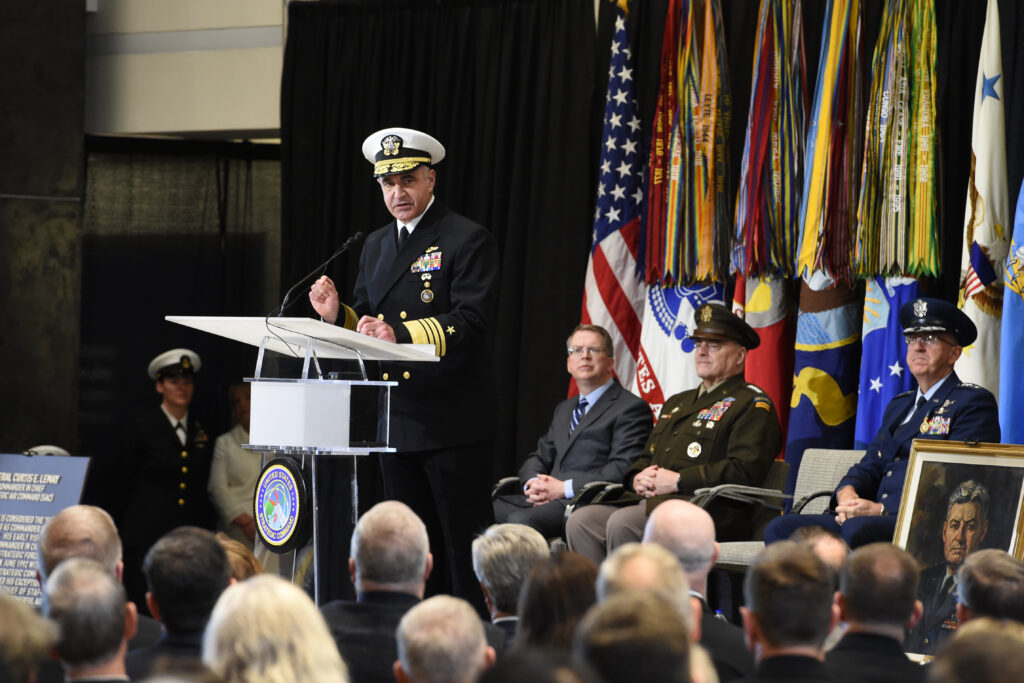
WASHINGTON: The Army’s top-priority IBCS system will be critical to the military’s Joint All-Domain Command and Control (JADC2) network, aimed at linking US forces across land, sea, air, space, and cyberspace in future conflicts, said Adm. Charles Richard, chief of Strategic Command (STRATCOM).
“IBCS is one way our missile defense community is working to integrate our capabilities, ” he told the annual Space and Missile Defense Symposium, which is virtual this year due to the COVID-19 pandemic, today. “When testing is complete, and IBCS can link all of our missile different systems together, that’s going to be an enormous step forward in the JADC2 arena.”

IBCS is a nested acronym for IAMD (Integrated Air & Missile Defense) Battle Command System, a network meant to link a wide variety of Army radars and weapons, such as Patriot, THAAD, and future lasers.
Richard explained that STRATCOM plays an “important role role as a coordinating authority for global missile defense.” Where as each regional command focuses on protecting the military assets in its own Area of Responsibility (AOR), he said, STRATCOM is working to “increase missile defense integration, and enable protection not just within an AOR, but across AORs as well.”
IBCS would help do this by eventually providing command and control for not just Army missile defenses, but also those of the other services.
Indeed, the Army has already invited the Air Force — which was charged by Chairman of the Joint Chiefs of Staff Gen. Mark Milley with leading efforts to develop the JADC2 concept of operations — to participate in a massive field exercise, called Project Convergence, to test its ability to share targeting data among its own weapon systems. (The Army has been charged with conops for logistics under attack.)
IBCS – an awkward nested acronym for IAMD (Integrated Air and Missile Defense) Battle Command System – will be the electronic nervous system for the future air and missile defense force, allowing formerly separate systems like Patriot and THAAD to share targeting data with split-second timing.

As Sydney reported yesterday, IBCS is finally, after a false start way back in 2016, going through its official Limited User Test ahead of this fall’s formal Milestone C review, where Army officials will decide whether or not to move ahead to mass production.
Richard also noted that the Army is playing a key role in ensuring the future JADC2 network is resilient, via work at the Army Space and Missile Defense Center of Excellence to explore high-altitude alternatives to space-based systems.
“If our space assets are jammed or incapacitated for any period of time, high-altitude assets can help provide the coverage on short notice, and with low costs,” he said.
“In order to deter our adversaries in the 21st century, we need to affect and alter their decision calculus,” Richard added. “We need them to know that any attack on the United States or our allies will have little margin or probability of success, and our response will result in a very bad day for them. … And we need to make sure our capabilities provide adequate command and control for the times we need it the most.”

